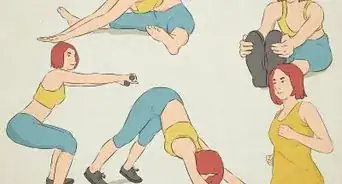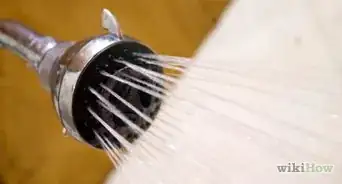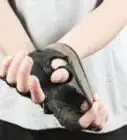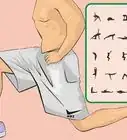This article was co-authored by Michele Dolan. Michele Dolan is a BCRPA certified Personal Trainer in British Columbia. She has been a personal trainer and fitness instructor since 2002.
There are 12 references cited in this article, which can be found at the bottom of the page.
This article has been viewed 107,918 times.
When you cut in bodybuilding, the goal is to reduce the fat on your body while maintaining your muscle mass. In order to do this, you will need to reduce the number of calories you eat so that your body begins to use the fat you have stored away. For bodybuilders, this process is abnormal, as they typically eat a large number of calories so they can build up more muscle mass. If you want to cut while bodybuilding, you first need to change your diet. Then you need to change your routine so that you burn more calories on a daily basis.
Steps
Following a Plan
-
1Assess your current weight and body fat percentage. If you want to cut the fat off your body, you should figure out your starting point. Weigh yourself and measure your body with calipers. Once you have the body fat measurement from your calipers, you can do body fat calculations that take into account your height and weight.[1]
- When cutting, you want to maintain your muscle mass while losing fat. This means you need a way to measure whether the weight you lose is from fat and not muscle. Calculating your body fat percentage is the easiest way to assess this.
- There are a variety of body fat calculators you can use online. You simply input your caliper readings and the other information requested and they will tell you your body fat percentage.
-
2Make a weight loss goal. When you start cutting you should make a goal for weight loss. This could be an overall goal but many people use a weekly goal. This allows you to track your progress weekly, make changes as you go, and set an endpoint for cutting.[2]
- Many people set a goal of losing 1 pound (16 ounces) per week while cutting. This is typically a reasonable goal that can be attained through dietary and lifestyle changes.
- A goal of losing more than 1 pound per week would likely require crash dieting or other extreme measures that are not healthy.
- Calculate when you need to have reached your target weight and work backward. Make sure that you have enough time to safely lose 1 pound a week and meet your goal.
Advertisement -
3Change your routine and diet if you don’t meet your goals. As you begin cutting, don't be afraid to change your program. If you are not losing the weight that you want to, reduce the number of calories you are eating, make changes to what you are eating, or increase your exercise. Figuring out what works for you may take some fine-tuning.[3]
- If your cutting routine is not working, consider consulting with a fitness professional for some advice. They may have good insight into what you can do to reach your goals.
- Self-discipline is important for cutting. Try to avoid temptation and stick with your new diet until you reach your goal.
-
4Track your calories. You need to reduce your caloric intake so that you are eating fewer calories than you are burning. Every day, write down what you eat as well as the portion size and the number of calories that you consumed. You can keep a journal or use a nutrition app, like MyFitnessPal or SuperTracker.
- You can use the same app or journal to keep track of your daily exercise. This will let you see if you are burning more calories than you are eating.
Changing Your Diet
-
1Reduce the number of calories you eat. When you start cutting you should begin to eat fewer calories than you typically burn in a day. This is referred to as being in a caloric deficit. When you eat less than your body is burning, your body begins to use up fat to make up the difference.[4]
- For a cutting diet, try eating 10 calories for every pound of lean muscle mass that you have. For example, if you have a lean muscle mass of 180 pounds, you should only eat 1800 calories a day while cutting.
-
2Make changes gradually. As you begin cutting, you should reduce your calorie intake gradually. This will help you adjust mentally to the new amount of food you will be eating. It will also help your body adjust physically to processing less food every day.
- An abrupt change in the amount of food you are eating can impact your metabolism and increase fat storage.
-
3Prioritize protein. In addition to reducing your total number of calories, you also need to adjust what you are eating. Make protein your food priority, as this will help you keep your muscle mass in place and will help you burn more calories.[5]
- However, it's also important to eat a variety of foods to give your body the nutrients it needs. In general, eat low-fat foods and try to limit your carbohydrates.
- Some great foods to eat while cutting include grilled meats, vegetables, low-fat cottage cheese, eggs, and almonds.
-
4Keep eating healthy fats. When you are cutting you do not want to cut all fats. Healthy fats, such as those in fish, seeds, and nuts, are important because they help keep your body systems operating well. They also provide you with the energy you will need for an increase in aerobic exercise.[6]
- Remember, eating fat doesn't automatically make you fat. It includes more calories than proteins or carbohydrates but fat can make you feel more full and energetic than other diet components.
-
5Cut out sugar, alcohol, and unnecessary oils and fat. When deciding what to eat while cutting, try to pick items that can be eaten without the addition of sugar or excess oils. This can be accomplished in most cases by choosing a method of cooking that doesn't require the addition of oil or sugar, such as steaming or grilling.[7]
- You should also avoid drinking alcohol when cutting. It changes to sugar in your body and adds empty calories to your diet.
-
6Eat frequently. When you are eating less food than your body uses every day, it's a good idea to eat often. Giving your body some food at regular intervals will stave off extreme hunger better than eating 3 meals and will give your body and mind the energy they need to stay strong and active.[8]
- Spreading your calories out over the course of the day will not help you lose more weight. It will simply make you less hungry throughout the day.
- Try eating 6 to 8 very small meals every day. Typically, this is the same number of meals that bodybuilders who are bulking up eat. However, these meals will be much smaller.
- Some light meals you can eat on the go include cottage cheese, nuts, raw vegetables, fruit, Greek yogurt, and grilled meats, such as chicken or salmon.[9]
-
7Take daily vitamin and mineral supplements. If you are on a reduced-calorie diet, you may not be getting all of the nutrients that your body needs. Find a daily multivitamin and a mineral supplement, such as iron or calcium.[10]
Changing Your Routine
-
1Check your progress. As your cutting program continues, be sure to chart your progress. Weigh yourself regularly and check your body fat percentage. Make sure that you are making reasonable progress towards your goal.
- Checking your weight loss will help you assess whether your program is working or if you need to switch it up.
-
2Increase your cardio exercise. When you are trying to cut fat it is a good idea to do more cardio. This will burn more calories, increasing the calorie deficit you are creating.[11]
- Some great cardio exercises you can do at home include squats, burpees, ski jumpers, mountain climbers, jumping jacks, and jumping rope.
-
3Drink more water. When you are cutting, drinking more water can be very helpful. It replaces the body fluids you need to make your systems work efficiently. It also makes you feel full, which can help you stave off the hunger that comes with a calorie deficient diet.[12]
- Water is a better choice of beverage than sports drinks or soda. It hydrates you more efficiently and does not add a bunch of extra calories or sugar to your diet.
-
4Continue your weight-lifting routine. While you are cutting, you can still build muscle mass. However, it is more important to focus on maintaining the muscle mass you already have. Continue the weight-lifting routine you use for muscle maintenance.
- Gaining muscle mass can make it difficult to determine if you are losing fat while cutting. It may appear as if you are losing less fat than you actually are, as you are losing fat but gaining muscle. You will need to reassess your BMI and determine how much fat you have lost in comparison to your lean muscle mass.
Community Q&A
-
QuestionDo I have to increase my reps from 8 to 15 if I'm cutting?
 Community AnswerBeing more strict with your diet and adding cardio to your routine would be more important than changing your rep number. Also, implementing supersets/dropsets in to your weightlifting regiment will help you get your heart rate up without sacrificing your strength gains by jumping from 8 reps to 15 reps. Limiting your rest periods between sets to just 30-45 seconds instead of a minute or two will keep your heart rate up throughout your workout as well, which will keep your metabolism revved up. These are all methods that the old school bodybuilders like Arnold would use the weeks leading up to the Mr. Olympia competition to get themselves to lose some fat and get as cut as possible.
Community AnswerBeing more strict with your diet and adding cardio to your routine would be more important than changing your rep number. Also, implementing supersets/dropsets in to your weightlifting regiment will help you get your heart rate up without sacrificing your strength gains by jumping from 8 reps to 15 reps. Limiting your rest periods between sets to just 30-45 seconds instead of a minute or two will keep your heart rate up throughout your workout as well, which will keep your metabolism revved up. These are all methods that the old school bodybuilders like Arnold would use the weeks leading up to the Mr. Olympia competition to get themselves to lose some fat and get as cut as possible. -
QuestionHow do I lose fat and gain muscles without going to gym?
 Community AnswerYou can limit your carb intake in order to lose fat. However, you cannot gain muscle without working out regularly. Try to find an activity you enjoy and do it often.
Community AnswerYou can limit your carb intake in order to lose fat. However, you cannot gain muscle without working out regularly. Try to find an activity you enjoy and do it often.
Warnings
- Always try to maintain a normal BMI, even while cutting. If your BMI dips too low, it can affect bodily functions and even your brain.⧼thumbs_response⧽
References
- ↑ http://www2.gsu.edu/~wwwfit/bodycomp.html
- ↑ https://www.med.umich.edu/pfans/_pdf/hetm-2015/0115-smalltipstolosebig.pdf
- ↑ http://www.womenshealth.northwestern.edu/blog/overcoming-weight-loss-plateau
- ↑ https://www.hsph.harvard.edu/news/press-releases/diets-weight-loss-carbohydrate-protein-fat/
- ↑ https://www.healthline.com/nutrition/how-protein-can-help-you-lose-weight#section3
- ↑ http://www.foodnetwork.com/healthy/articles/importance-of-healthy-fats
- ↑ https://www.bodybuilding.com/fun/arnold-schwarzeneggers-blueprint-to-cut-nutrition.html
- ↑ https://www.health.harvard.edu/diet-and-weight-loss/eating-frequency-and-weight-loss
- ↑ http://www.mensfitness.com/nutrition/what-to-eat/10-foods-that-fill-you-up-while-you-trim-down/slideshow
About This Article
To cut in bodybuilding, you'll need to reduce the number of calories you eat while continuing your weight-lifting routine to maintain your muscle mass. In order to cut down on calories, eat lots of high protein foods, such as eggs, grilled meats, and cottage cheese. Additionally, eat healthy fat, like those in fish and nuts, to give you energy for your workouts. Then, increase your cardio exercise, like running and swimming, to burn more calories. You may also want to consider taking a daily vitamin and mineral supplements to ensure you're getting enough nutrients. For more tips from our Fitness co-author, like how to calculate the number of calories you should eat, read on!
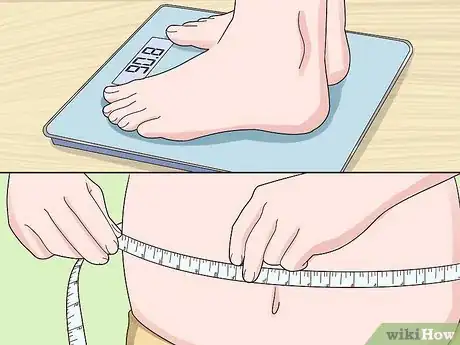
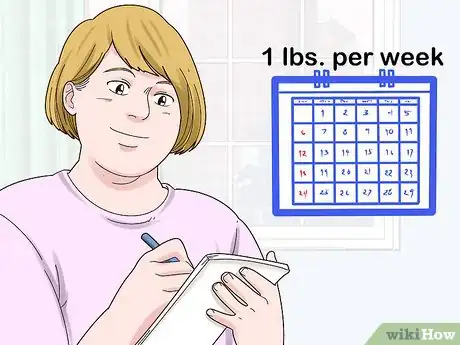

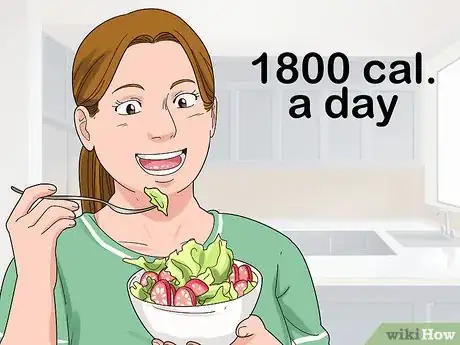

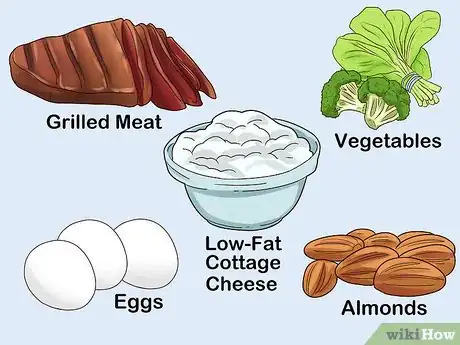
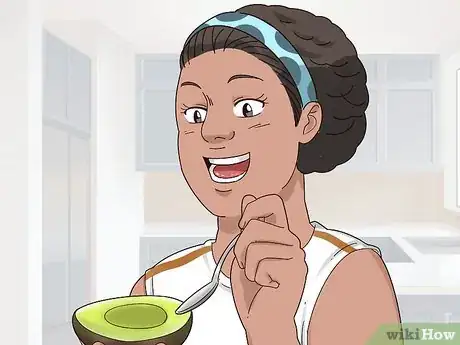
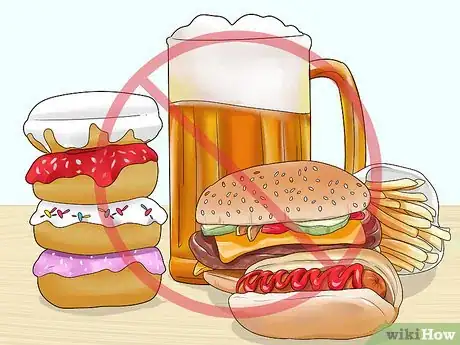
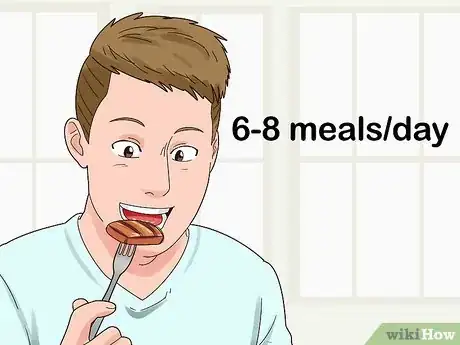


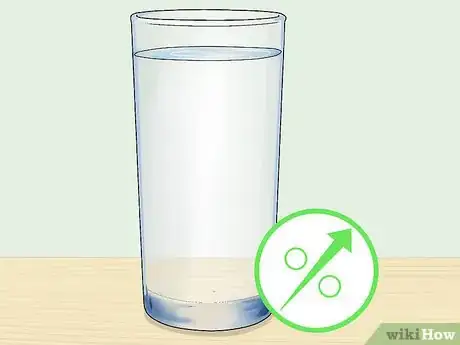
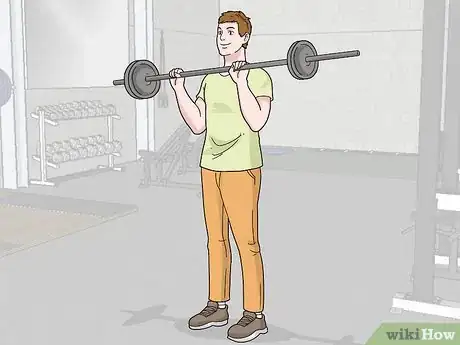

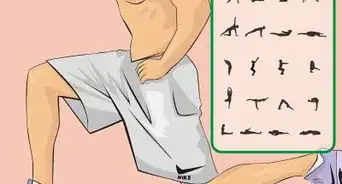
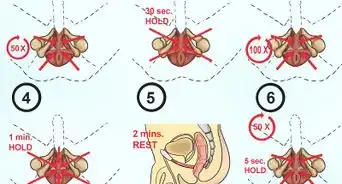
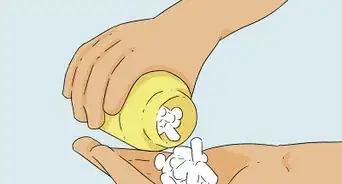
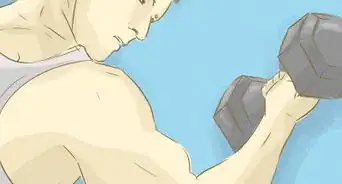

-Step-24.webp)
